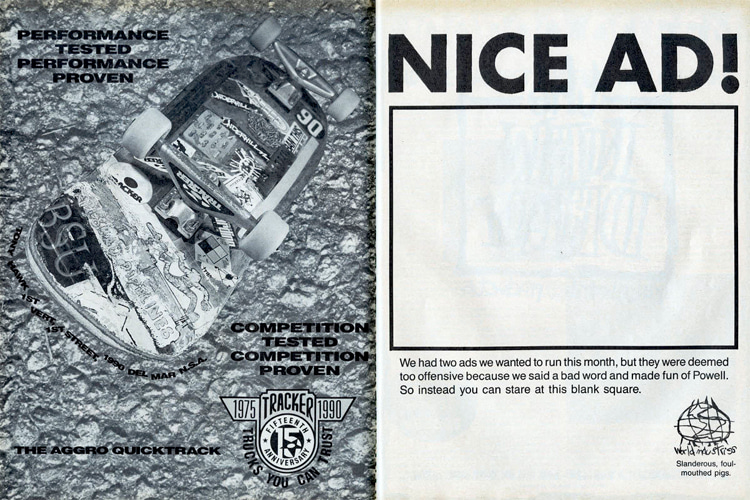When skateboarding hit it big for the third time in the 1980s, five major skateboard companies emerged: Powell Peralta, Santa Cruz, Tracker, Independent, and Vision (which also had Schmitt Stix and Sims).
Enormous amounts of money were rolling into the industry.
It was not unheard of for professional skaters to be making twice or three times what their parents were earning.
But despite this success, all was not rosy.
Most skateboard manufacturers at the time tended to be more corporate and conservative.
Skaters wanted to do whatever they felt like doing. In most cases, this led to some friction between the two parties.
Many skaters felt that the manufacturers were unwilling to listen and act on their suggestions.
The companies, for their part, tried to respond as best as they could within the parameters of standard business practices.
As skateboarding moved from wooden ramps to the street, it became increasingly technical, incorporating numerous ollie variations and flips.
Pro skaters were the first to start changing their technology.
Skaters like Mark Gonzales would take freestyle wheels - which were much harder and smaller than the traditional skate wheels - and use them to achieve higher ollies.
Skaters who had started life as pros in the early to mid-1980s were no longer teenagers. They had minds of their own, and they disliked not being able to follow through on their ideas.
The dream of skaters making equipment for skaters was the catalyst for the rise of the independent skateboard company.
Steve Rocco was the first person to start chipping away at the Big Five's domination of the marketplace.
When he started his own company in 1987, people had no idea that within five years, the skateboard industry would be turned upside down.
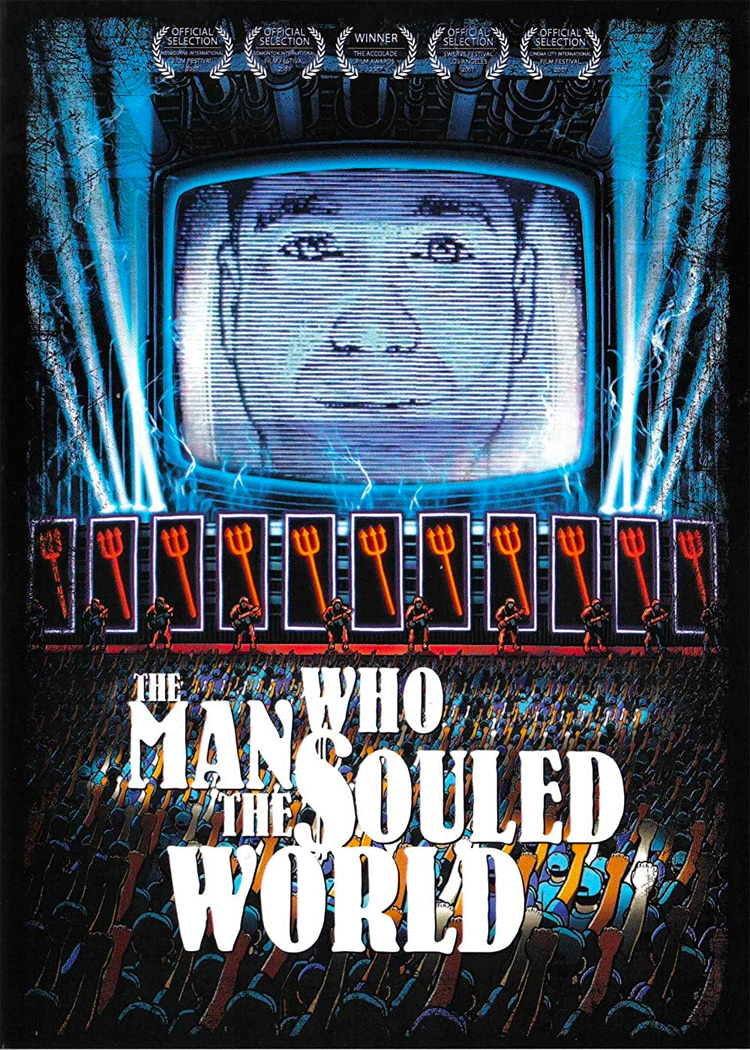
The Beginnings
When I was about 11, my brother Pat got a skateboard for his birthday. My dad got me one, also.
There was a curb about 18 inches high near our house. We would spend hours just trying to ride off of it.
The First Sponsor
The first sponsor there was this guy, Jim Drake, who lived near me. His brother owned Tunnel, and he just started giving me free stuff.
At first, I was the worst guy on the team - like a mascot.
I wound up on Powell, but I only rode for them for about a month. Then Sims offered me a Pro Model in 1979.
This was the first freestyle pro model.
The Problems and the Solution
In the early 1980s, Vision took over Sims, and it was all downhill.
Brad Dorfman treated us like bastard step-children while Vision got all the glory. I was very rebellious, and in 1987, Brad kicked me off the team.
I was living on Natas Kaupas' kitchen floor at the time.
I vividly remember having dinner with Natas and Skip Engblom of Santa Monica Airlines at a Mexican restaurant.
I was 27, with no sponsor. I thought my life in skateboarding was over.
I would have to go back to work for my dad in the dry cleaning store. Skip told me not to worry.
The next morning, he took me to this woodshop and told me if I bought 500 boards, he could get them sold for me.
I cash-advanced by credit card for $6,000, and Santa Monica Airlines: Rocco Division was born.
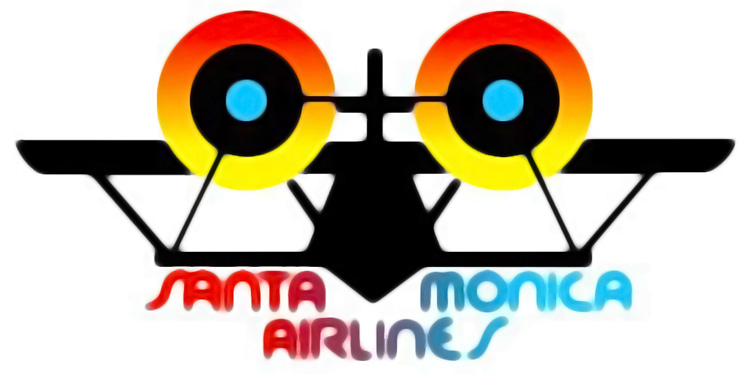
We've Got a Company, Now What?
From there, things just got crazier. I teamed up with John Lucero from Black Label, and we got a warehouse together.
After three weeks, Lucero backed out because I spent $800 on shelves.
Once again, I thought it was over. This time, the rescue came from a very unlikely source - Rodney Mullen.
Rodney bought out Lucero for $6,000, and we were partners.
This might lead you to believe that Rodney had a keen sense of business and a prophetic vision of the future.
In reality, I tricked Rodney out of the money, and he pretty much figured it was as good an investment as flushing it down the toilet and hoping more would come back up.
This is pretty much true because, at the time, we were broke. I borrowed $20,000 in a paper bag from a bookie.
The pay-back conditions were simple: borrow $20,000, pay back $30,000 in one year, or else. Nothing motivates like fear.
And with Rodney around, we had plenty of that.
I took my bag of cash down to Vision and waved it around the parking lot.
Jesse Martinez was the only one who would listen to me. I offered him $2 a board royalty, twice the industry standard, and he fell for it.
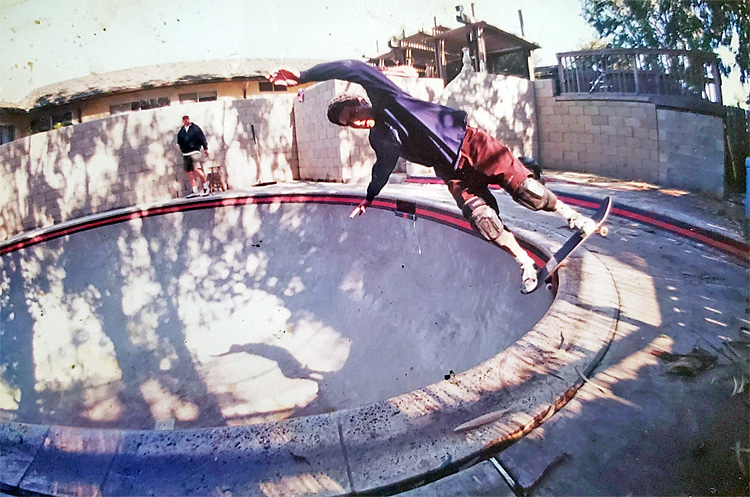
1988: Things Start Moving
With Jesse at my side, the company started to take shape. He brought in Jeff Hartsel, which now gave us a team of three.
For the first time, I actually felt like things were starting to go well. The problem was they were going too well.
We started selling more than anyone had ever anticipated, and before long, the eyes of the big skateboard companies were on us.
The first to act was Santa Cruz. At the time, Santa Cruz was licensing the Santa Monica Airlines name from Skip.
They got a little annoyed because I ran an ad saying that all wheels came from the same place and were made of the same stuff; hence, there was no such thing as "special formulas."
The penalty for telling the truth was to have Skip call and tell me I could no longer use the Santa Monica Airlines name.
I was devastated. Next, Rodney was told that if he didn't pull out his investment (now up to $18,000), he would be kicked off the Powell team.
Rodney came to me and told me he was out. Then another competitor kicked in and tried to stop our mold maker from delivering us the first double kick molds.
At this point, most people with any common sense would have just given up. These three companies had combined sales of over 100 million dollars.
I was living off the dollar bills kids sent in for stickers. Fortunately, the only thing I had less of than money was common sense.
Job one was to convince (trick) Rodney into staying.
Rodney was trying to figure out where to stay by confronting George Powell and me with worst-case scenarios.
He told us both that he was leaving and figured he would stay with the one who handled it better.
He asked me if I would pay him back all his money. I told him, "sure, no problem," even though I would have killed him.
He then told George he might be leaving, and George told him he was an idiot for considering World over Powell.
Rodney came back and said he was quitting Powell, and he and Mike Vallely were going to ride for World Industries. I tried to act surprised, but I knew what Rodney was doing all along.
Mike and Rodney each put in $15,000, which gave us the money we needed for the double kick molds.
We changed our name to SMA World Industries as a joke, but they said we couldn't use the SMA part, so we dropped the SMA, and World Industries was born.
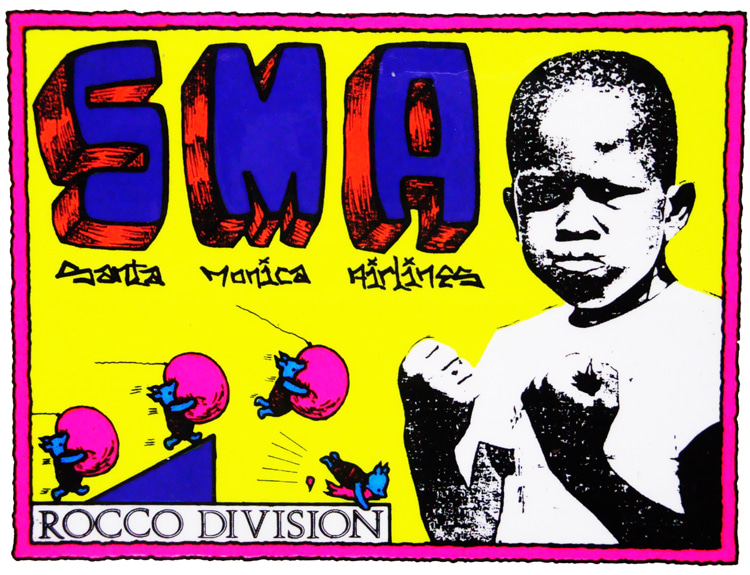
The Notorious Nineties
To the skateboard industry, World Industries was now an actual, real company with riders. But to us, the company was more like a giant toy.
Our company motto was pretty much "Why not?" We would do ads without products, skateboard graphics with cartoons instead of skulls, and skateboard shapes that didn't look like skateboards.
Now, in the wacky world of skateboarding today, this sounds like no big deal, but in 1990, people thought we were out of our minds, and at the time, we were.
In fact, only in retrospect can we now look back and see the thin line we walked was closer to insanity than the premeditated genius that people often give us credit for.
But success quickly transforms pea-brains into prophets, and our success started with the Mike Vallely animal farm board.
This board and the people behind it would change the face of skateboarding forever. This was Marc Mckee's first skateboard graphic.
The cartoon characters not only represented a clear departure from the usual skulls and gore that dominated the market at the time, but they introduced the element of wit and humor into graphics as well.
In the years to follow, McKee would set the standard in graphics for the whole industry. This was also Rodney Mullen's debut as a shape maker.
At the time, almost all large boards were pointy-nosed. This looked more like a giant freestyle board than anything else.
Though by today's standards, it may look funny, this board was the predecessor of modern shapes to come, and like McKee, Rodney would lead the way in shapes for the next decade.
Blind, 101, Plan B, Etc.
In 1990, Mark Gonzales approached me after he saw what we were doing. He was pretty amazed to be a part of it.
At the time, he was riding for Vision, and the whole idea of Blind was his idea - "Blind" being the opposite of "Vision."
We started up the company together and took our best pro from World, who at the time was Jason Lee, and moved him to Blind.
Things just took off from there.
In 1991 we started 101.
Natas Kaupas was friends with Mark Gonzales and myself, and he saw what was going on, and he wanted to do the same thing.
It was a real simple handshake deal. Nothing was ever really planned out.
Plan B was different.
In 1992, H Street's Mike Ternasky came to me and said he wasn't happy with the way the owner was treating him.
There was some disagreement over money.
Mike came to me to help get him started. We were the distributor and manufacturer, and Mike worked on marketing out of his San Diego office.
One key thing Mike was able to accomplish was that he got Rodney Mullen, the world's best freestyler, pointed in the street skating direction.
He recognized Rodney's talents, and as a result, most of the ollie variations done by today's skaters have their roots with Rodney.
Plan B was one of the first companies that were formulated for instant success.
Mike was going to call the company Type A (after the personality classification) but eventually decided to call it Plan B.
In 1993, things were going really well until about September.
Plan B rider Rick Howard got into a fight with Mike Ternasky over a wheel invoice.
It was a completely retarded thing, and he got the other skaters all riled up. Rick took seven of our top pros and started Girl.
Mike was devastated after they left. We sat down and tried to regroup - it was like getting sucker-punched.
In January 1994, we got hit again when Girl started up Chocolate and took another whack of our riders.
Although I wanted to kill these guys, Mike made me promise that we would beat them fair and square.
Tragically, he was killed in a car accident in 1994.
Eventually, Plan B broke away from the World Industries family.
In 1995, I realized that both World and Blind needed more cohesiveness - we were doing things, and they were okay, but there was no general direction.
That's when I picked Marc McKee's "devil man" logo to be the base of World. We saw how well that worked and added the grim reaper to be the focus of Blind.
In 1997, the A-Team was developed, and it was the first company that was completely thought out.
It was aimed at the skaters who were extremely serious about skating. The hardest thing when you go on a demo with the A-Team guys is to have them stop once the demo is finished.
You can't get them to stop, even after the kids have left.
Our whole company has skateboarding in its roots.
Skateboarding is part of the lives of the people who work here. The challenge is to grow the company to make it a different type of organization.
But at the core of World Industries, I am just happy to continue to do the fun stuff.
Words by Steve Rocco | Skateboarder and Founder of World Industries
Courtesy of Warwick Publishing / Michael Brooke
